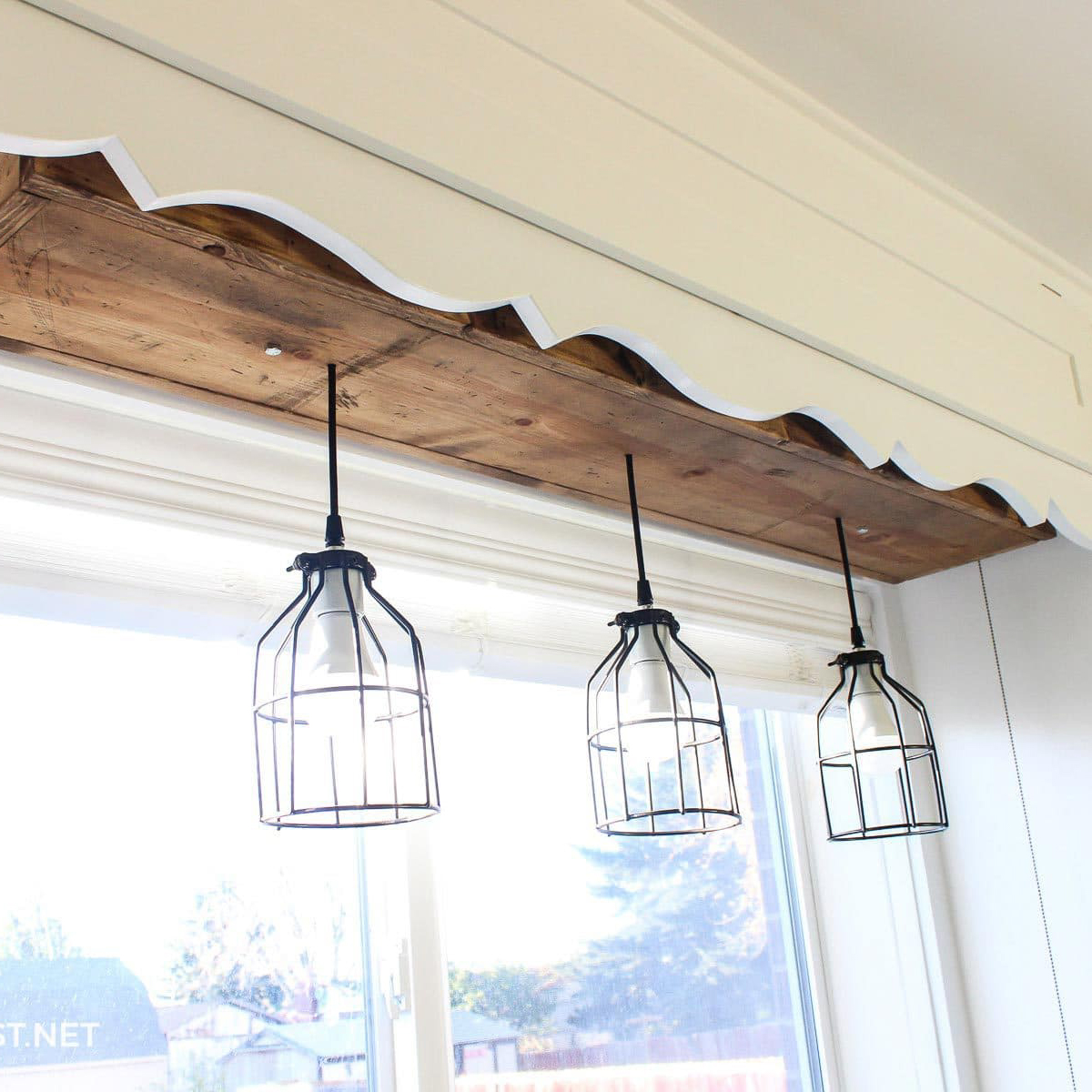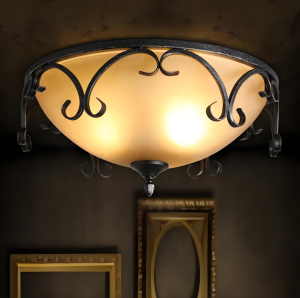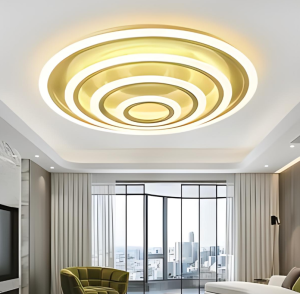
Light Up Your Home with a Stylish Chandelier: Elevate Your Decor Game!
A chandelier is more than just a nushliving lighting fixture; it is a statement piece that can elevate the elegance and sophistication of any room. Whether you are looking to add a touch of glamour to your living room or create a romantic ambiance in your bedroom, a chandelier can be the perfect addition to your home decor. With their versatility in different spaces and the wide variety of styles and designs available, there is a chandelier to suit every taste and aesthetic.
Chandeliers have long been associated with luxury and grandeur. They have the ability to instantly transform a room, making it feel more opulent and refined. The cascading crystals or sleek lines of a chandelier can create a focal point that draws the eye and adds a touch of glamour to any space. Whether you choose a classic crystal chandelier or a modern minimalist design, the right chandelier can make a bold statement and enhance the overall aesthetic of your home.
One of the great things about chandeliers is their versatility. They can be used in various spaces throughout your home, from the entryway to the dining room, bedroom, or even bathroom. In larger rooms, a grand chandelier can create a sense of drama and grandeur, while in smaller spaces, a smaller chandelier can add a touch of elegance without overwhelming the room. With so many different styles and designs available, you can find a chandelier that suits your personal style and complements your existing decor.
Key Takeaways
- A chandelier is the perfect addition to elevate your home decor.
- There are various types of chandeliers available, from classic to contemporary designs.
- Choosing the right material and finish is crucial when selecting a chandelier for your home.
- Determining the right size chandelier for your space is important for both aesthetics and functionality.
- Understanding the different types of chandelier lighting options can help you create the perfect ambiance in your home.
Types of Chandeliers: From Classic to Contemporary Designs
When it comes to chandeliers, there is no shortage of options. From classic designs with crystal accents to modern fixtures with sleek lines and minimalistic designs, there is a chandelier to suit every taste and style. Whether you prefer traditional elegance or contemporary simplicity, there is a chandelier out there that will perfectly complement your home decor.
Classic chandeliers are often associated with luxury and opulence. These chandeliers feature intricate designs, crystal accents, and ornate details that add a touch of glamour to any space. They are perfect for traditional or vintage-inspired interiors and can create a sense of grandeur and elegance in a room.
On the other end of the spectrum, modern chandeliers offer a sleek and minimalist design. These chandeliers often feature clean lines, geometric shapes, and a focus on simplicity. They are perfect for contemporary or modern interiors and can add a touch of sophistication and style to any space.
For those who prefer a more rustic or industrial look, there are chandeliers made from natural materials like wood and metal. These chandeliers often have a more casual and relaxed feel, making them perfect for farmhouse or industrial-inspired interiors. They can add warmth and character to a room while still making a statement.
Materials and Finishes: Choosing the Right Chandelier for Your Home
When choosing a chandelier for your home, it is important to consider the materials and finishes that will best complement your existing decor. The right finish can enhance the overall aesthetic of the room and create a cohesive look.
Some popular finishes for chandeliers include brass, bronze, and chrome. Brass finishes have a warm and timeless appeal, while bronze finishes can add an antique or vintage touch to a space. Chrome finishes offer a sleek and modern look that is perfect for contemporary interiors.
In addition to the finish, it is also important to consider the material of the chandelier. Glass, crystal, and acrylic are common materials used in chandelier construction. Glass chandeliers offer a classic and elegant look, while crystal chandeliers add sparkle and glamour to a room. Acrylic chandeliers are a more affordable option that still offers a stylish and modern look.
When choosing the finish and material for your chandelier, it is important to consider the overall aesthetic of your home. If you have a traditional or vintage-inspired decor, a brass or bronze chandelier with crystal accents may be the perfect choice. If you have a contemporary or modern decor, a chrome or glass chandelier with sleek lines may be more suitable. By choosing a finish and material that complements your existing decor, you can create a cohesive and stylish look in your home.
Size Matters: How to Determine the Right Size Chandelier for Your Space
| Room Size | Chandelier Diameter | Height from Floor |
|---|---|---|
| Small (up to 10′ x 10′) | 17″ – 20″ | 7′ – 8′ |
| Medium (up to 12′ x 12′) | 26″ – 27″ | 7.5′ – 9′ |
| Large (up to 14′ x 14′) | 30″ – 34″ | 8′ – 9.5′ |
| X-Large (up to 18′ x 18′) | 36″ – 40″ | 9′ – 10.5′ |
| XX-Large (over 18′ x 18′) | 48″ or larger | 10′ or higher |
Choosing the right size chandelier for your space is crucial to ensure that it looks proportionate and balanced in the room. A chandelier that is too small can get lost in a large space, while a chandelier that is too large can overwhelm a small room. By taking the time to measure your space and calculate the appropriate size, you can find a chandelier that fits perfectly in your room.
To determine the right size chandelier for your space, start by measuring the height and width of the room. For rooms with standard 8-foot ceilings, a chandelier that is 20-24 inches in diameter is usually appropriate. For rooms with higher ceilings, you can go larger with a chandelier that is 26-30 inches in diameter.
In addition to the size of the room, it is also important to consider the size of the table or area where the chandelier will be placed. In dining rooms, for example, the chandelier should be about 12 inches narrower than the width of the table. This ensures that it does not overpower the table and allows for comfortable conversation without obstructing views.
When choosing a chandelier, it is also important to consider the overall scale and proportion of the space. A large chandelier in a small room can make the space feel cramped and crowded, while a small chandelier in a large room can feel underwhelming. By choosing a chandelier that is proportional to the space, you can create a balanced and harmonious look in your room.
Lighting Options: Understanding the Different Types of Chandelier Lighting
Chandeliers not only add beauty and style to a room, but they also provide essential lighting. Understanding the different types of chandelier lighting can help you create the right ambiance and functionality in your space.
Ambient lighting is the overall illumination in a room. Chandeliers can provide ambient lighting by diffusing light throughout the space. This type of lighting is important for creating a warm and inviting atmosphere in a room.
Task lighting is focused lighting that is used for specific activities or areas. In a dining room, for example, a chandelier can provide task lighting for the table, allowing for comfortable dining and conversation. In a bedroom, a chandelier can provide task lighting for reading or getting ready in the morning.
Accent lighting is used to highlight specific decor or architectural features in a room. Chandeliers with adjustable lights or dimmers can be used to create accent lighting by directing light towards artwork, architectural details, or other focal points in the room. This type of lighting adds depth and visual interest to a space.
By understanding the different types of chandelier lighting, you can choose a chandelier that not only looks beautiful but also provides the right amount of light for your needs. Whether you are looking to create a cozy ambiance in your living room or need focused lighting for your dining table, there is a chandelier out there that can meet your needs.
Installation: DIY or Hire a Professional?

Installing a chandelier can be a complex task that requires electrical knowledge and expertise. While some homeowners may feel confident enough to tackle the installation themselves, others may prefer to hire a professional to ensure that it is done safely and correctly.
One of the main factors to consider when deciding whether to install a chandelier yourself or hire a professional is the complexity of the installation. Chandeliers can be heavy and require secure mounting to the ceiling. They also require electrical wiring and connections, which can be dangerous if not done properly. If you are not comfortable working with electricity or do not have experience with electrical installations, it is best to hire a professional to ensure that the installation is done safely.
Another important factor to consider is safety. Installing a chandelier involves working at heights and handling heavy objects. If you do not have the necessary equipment or experience to work safely at heights, it is best to leave the installation to a professional. They will have the proper tools and equipment to safely install the chandelier and ensure that it is securely mounted to the ceiling.
While hiring a professional may come with an additional cost, it can provide peace of mind knowing that the installation is being done correctly and safely. A professional installer will have the knowledge and expertise to handle any challenges that may arise during the installation process and can ensure that your chandelier is installed to your satisfaction.
Maintenance and Cleaning Tips: Keeping Your Chandelier Looking Its Best
Once your chandelier is installed, it is important to properly maintain and clean it to keep it looking its best. Regular dusting and cleaning can help prevent dirt and grime from building up on the surface of the chandelier and dulling its shine.
To dust your chandelier, start by turning off the power and allowing the bulbs to cool down. Use a soft, lint-free cloth or a feather duster to gently remove any dust or debris from the surface of the chandelier. Avoid using harsh chemicals or abrasive materials, as they can damage the finish or scratch the surface of the chandelier.
For more thorough cleaning, you can use a mild detergent mixed with warm water. Dip a soft cloth or sponge into the soapy water and gently wipe down the surface of the chandelier. Be sure to wring out the cloth or sponge well to avoid dripping water onto the electrical components. After cleaning, use a clean, damp cloth to remove any soap residue, and then dry the chandelier thoroughly with a soft, lint-free cloth.
Cleaning hard-to-reach areas of the chandelier can be challenging. If possible, use a ladder or step stool to get closer to the chandelier and reach those difficult spots. If necessary, you can also remove individual crystals or parts of the chandelier to clean them separately. Just be sure to keep track of where each piece goes so that you can reassemble the chandelier correctly.
By regularly dusting and cleaning your chandelier, you can keep it looking its best and maintain its shine and beauty for years to come.
Chandelier Placement: Finding the Perfect Spot in Your Home
Finding the perfect spot for your chandelier is crucial to ensure that it has maximum impact in your space. Whether you are installing a chandelier in your entryway, dining room, or bedroom, there are a few factors to consider when determining the placement.
One of the most important factors to consider is choosing a central location for your chandelier. A chandelier should be placed in a spot where it can be seen and appreciated from different angles in the room. In an entryway, for example, a chandelier can create a grand entrance and set the tone for the rest of the home. In a dining room, a chandelier should be centered over the table to create a focal point and provide task lighting for dining and entertaining.
Another factor to consider is the height of the ceiling. Chandeliers should be hung at an appropriate height to ensure that they are not too low or too high for the space. As a general rule, chandeliers should be hung about 30-36 inches above a dining table and about 7 feet above the floor in other areas of the home. However, it is important to consider the scale and proportion of the space when determining the height of the chandelier.
It is also important to ensure that the chandelier is not obstructed by furniture or decor. In a dining room, for example, make sure that the chandelier is not blocked by a tall centerpiece or hanging too low that it interferes with conversation. In a bedroom, make sure that the chandelier is not obstructed by a canopy bed or other furniture.
By carefully considering the placement of your chandelier, you can ensure that it has maximum impact in your space and enhances the overall aesthetic of your home.
Chandelier Styling: How to Incorporate Your Chandelier into Your Decor
Once you have chosen the perfect chandelier for your space and installed it in the right spot, it is time to incorporate it into your decor. A chandelier can be more than just a lighting fixture; it can be a focal point that ties together the entire room.
One of the most important things to consider when incorporating your chandelier into your decor is choosing a chandelier that complements your existing decor. Whether you have a traditional, contemporary, or eclectic style, there is a chandelier out there that will perfectly complement your aesthetic. Consider the finish, material, and design of the chandelier and how it will fit in with your existing furniture, color scheme, and overall style.
In addition to choosing a chandelier that complements your decor, you can also use it as a focal point in the room. Hang it in a spot where it will draw attention and become a conversation piece. Consider adding other elements to enhance the impact of the chandelier, such as mirrors or artwork that reflect its beauty or accent lighting that highlights its design.
Another way to incorporate your chandelier into your decor is by using other lighting elements to enhance its impact. Consider adding sconces or floor lamps that complement the style of the chandelier and provide additional lighting in the room. By layering different types of lighting, you can create a warm and inviting ambiance that highlights the beauty of the chandelier.
By carefully considering the placement and styling of your chandelier, you can create a cohesive and stylish look in your home that showcases the beauty and elegance of this statement piece.
Elevating Your Home Decor with a Beautiful Chandelier
In conclusion, a chandelier is more than just a lighting fixture; it is a statement piece that can elevate the elegance and sophistication of any room. With their versatility in different spaces and the wide variety of styles and designs available, there is a chandelier to suit every taste and aesthetic.
From classic designs with crystal accents to modern fixtures with sleek lines and minimalistic designs, there is a chandelier out there that will perfectly complement your home decor. By choosing the right finish and material, you can create a cohesive look that enhances the overall aesthetic of your space.
When installing a chandelier, it is important to consider the complexity of the installation and the importance of safety. While some homeowners may feel confident enough to tackle the installation themselves, others may prefer to hire a professional to ensure that it is done safely and correctly.
Once your chandelier is installed, it is important to properly maintain and clean it to keep it looking its best. Regular dusting and cleaning can help prevent dirt and grime from building up on the surface of the chandelier and dulling its shine.
By carefully considering the placement of furniture and decor, you can create a harmonious and functional living space. One important aspect to consider is the flow of the room. Arrange furniture in a way that allows for easy movement and navigation throughout the space. Avoid blocking doorways or creating obstacles that may impede the natural flow of foot traffic. Additionally, consider the purpose of each area within the room and arrange furniture accordingly. For example, place a cozy sofa and coffee table in the center of a living room to create a comfortable gathering space, while positioning a desk and chair near a window for a productive workspace. By thoughtfully arranging furniture and decor, you can maximize both the aesthetic appeal and functionality of your living space.


